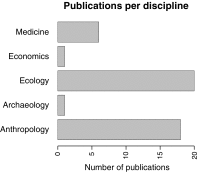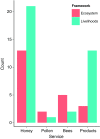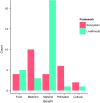A review of ecosystem service benefits from wild bees across social contexts
- PMID: 27878448
- PMCID: PMC5385664
- DOI: 10.1007/s13280-016-0844-z
A review of ecosystem service benefits from wild bees across social contexts
Abstract
In order to understand the role of wild bees in both social and ecological systems, we conducted a quantitative and qualitative review of publications dealing with wild bees and the benefits they provide in social contexts. We classified publications according to several attributes such as services and benefits derived from wild bees, types of bee-human interactions, recipients of direct benefits, social contexts where wild bees are found, and sources of changes to the bee-human system. We found that most of the services and benefits from wild bees are related to food, medicine, and pollination. We also found that wild bees directly provide benefits to communities to a greater extent than individuals. In the social contexts where they are found, wild bees occupy a central role. Several drivers of change affect bee-human systems, ranging from environmental to political drivers. These are the areas where we recommend making interventions for conserving the bee-human system.
Keywords: Community; Ecosystem cascade framework; Livelihoods framework; Social–ecological systems.
Figures






References
-
- Banaszak-Cibicka W, Żmihorski M. Wild bees along an urban gradient: Winners and losers. Journal of Insect Conservation. 2012;16:331–343. doi: 10.1007/s10841-011-9419-2. - DOI
-
- Berkes F, Folke C. Back to the future: Ecosystem dynamics and local knowledge. In: Gunderson LH, Holling CS, editors. Panarchy: Understanding transformations in human and natural systems. Washington, DC: Island Press; 2002. pp. 121–146.
Publication types
MeSH terms
LinkOut - more resources
Full Text Sources
Other Literature Sources

